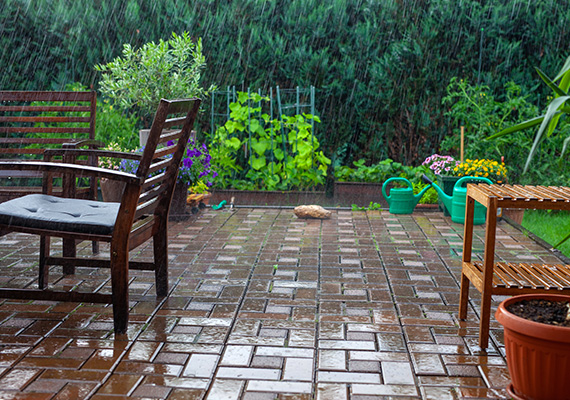4. Apply sealant to the rubber washer and insert the spigot into the hole. After the sealant dries, place a rubber washer on the inside of the barrel, followed by a metal washer onto the threads of the spigot. Tightly fasten the spigot inside the barrel with the hose clamp to keep it secure.
5. Cut a hole in the lid of the rain barrel, ensuring the hole sits directly under your home’s downspout. Near the top of the rain barrel, drill a couple holes to allow water to overflow.
6. Seal the top of the barrel with a piece of landscaping fabric and put the lid on top to secure it. This barrier will prevent mosquitos or other bugs from contaminating your rainwater but allow water to enter the barrel and overflow as needed.3
7. Enjoy your water.







